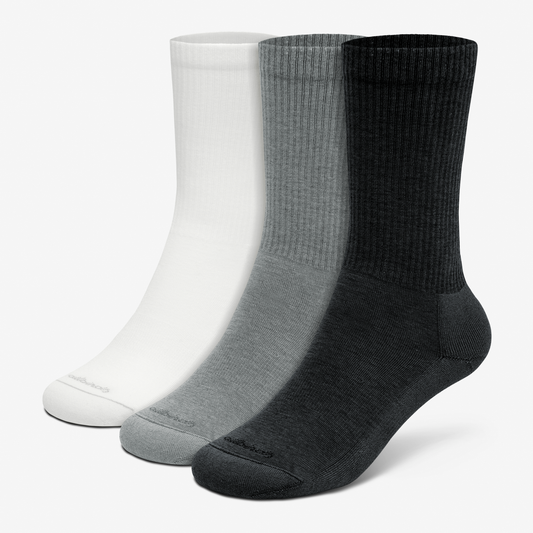It’s a time-tested, universal truth: spending some extended time immersed in the great outdoors is one of the best things you can do for your mind and body. And one of the best ways to do this is to take a hike—literally.
Whether you’re out for a short trek nearby or roughing it during an extended trip in the backwoods far away from humanity, there’s always a sense of escape that makes the experience even more gratifying.
But what if you’ve never hiked before? Well, you have to start somewhere. And fortunately, even the most novice of hikers can start off on the right foot with these simple tips for beginners.
1. Start Small
If possible, try to start out with shorter trails that match your fitness level. Gradually increase the distance and difficulty as you gain more confidence and stamina. Starting with a mile or two on easy terrain allows you to acclimate to the demands of hiking without overwhelming yourself and suddenly loathing the mere idea of hiking.
2. Research and Plan
As tempting as it may be to just show up and get to it, it’s best to learn about the area you’re visiting. Online resources, park websites, and local hiking clubs offer plenty of detailed trail information. Take special note of factors such as trail length, elevation gain, terrain type, and seasonal conditions. And definitely look at a detailed forecast of the weather before embarking so you know what’s coming by the hour.
3. Pack the Essentials
While you certainly don’t want to overload yourself, pack essential items like water, snacks (high in protein and carbs, ideally), a map, a compass or GPS device, a first-aid kit, a multi-tool or knife, and a flashlight. Inform a friend or family member about your hiking plans and expected return time—you never know what may happen out there.
4. Stay Hydrated and Fueled
Try to hydrate well before starting the hike, and bring water to stay hydrated throughout your bold trek into the semi-unknown. Energy-boosting snacks like nuts, granola bars, or dried fruits can provide quick refueling during breaks.
5. Follow Trail Etiquette and Leave No Trace
It’s easy to not be a jerk. Respect trail guidelines. Stick to marked trails to preserve the environment. Yield to uphill hikers, keep noise levels down, and pack out all trash to maintain the natural beauty of the trail. You get the idea. Be nice to others and the trail. You should also respect nature by leaving the trail undisturbed. Minimize your impact by not disturbing plants, animals, or natural features.
6. Take Breaks
Listen to your body's cues and take regular breaks to rest, hydrate, and appreciate the very surroundings you came to immerse yourself within. Avoid overexertion by pacing yourself and enjoying the hike at a comfortable rhythm—this isn’t a training session for a triathlon. Enjoy it!
7. Learn Basic Navigation
It’s easy to become reliant on technology and smartphones to get around, but you can’t always depend on these things on a hike where you may not have service. Understanding trail markers, maps, and basic compass use is crucial for a safe and enjoyable hike that goes according to plan. So, familiarize yourself with these navigation tools to stay on track, especially on new and unfamiliar trails.
8. Safety First!
No, but really, prioritize safety at all times. Be cautious around steep edges, watch for wildlife, and stay alert for potential hazards on the trail. If you’re uncertain about a certain section, take your time or consider turning back.
9. Find Some Hiking Buddies
Consider hiking with a friend or a group, especially as a beginner. It enhances safety and camaraderie, making the experience more enjoyable and supportive.
10. Keep Learning
Hiking is an ongoing learning process. Embrace each hike as an opportunity to learn and improve. Seek advice from experienced hikers, explore new trails, and refine your hiking habits so you can continue to grow in your skills and take on bigger and better hikes as time goes on. (If you ever feel like kicking it up a notch and trying trail running, try out our tips for beginning trail running, too.)
11. Gear Up
Invest in proper hiking gear to ensure comfort and safety. Moisture-wicking clothing, a well-fitted backpack, sunscreen, a cotton cap, and sunglasses are all fundamental. And if you’re hiking in cold weather, dressing in layers prepares you for any temperature variations. (Our Anytime Soft Merino and Allgood Organic Cotton Long Sleeve Tees are perfect for layering.)
Oh, and then there’s the shoes. What are good hiking shoes? Well, you’re going to need some that are rugged, comfortable, and well-equipped to handle whatever comes your way. And our Trail Runners SWTs check all the boxes.
With ultra-grippy treads and multi-directional 4mm lugs, the Trail Runners SWTs give your feet the solid foundation needed to take on any type of terrain. And don’t worry about soggy feet, either—a water-resistant finish on the outside keeps your feet dry in wet conditions and any splashes from the occasional puddle or shallow stream.
On the inside, you’ll find a breathable eucalyptus tree fiber and wool blend one-piece upper, our soft, bouncy Sweetfoam® sugarcane midsole, and a snug, sock-like collar that blocks debris from getting inside. Read all about hiking with Allbirds Trail Runners.
Stay safe and enjoy the trails!
















